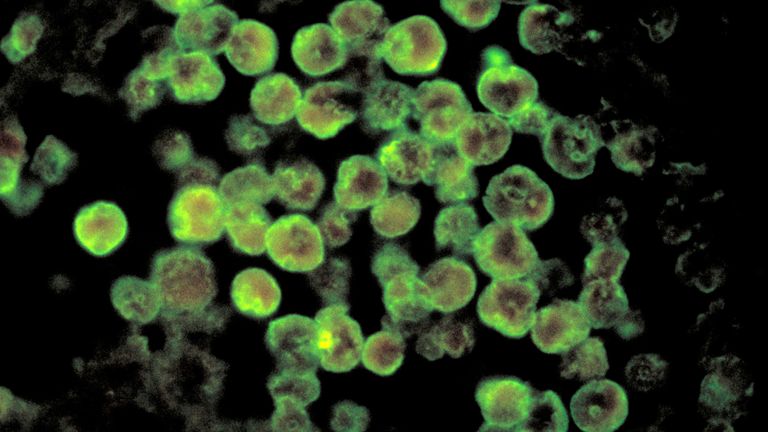
The parents of a 12-year-old boy who died from due to a “brain-eating amoeba” say they are “terrified it will happen to someone else”.
Jaysen Carr died two weeks after swimming in one of South Carolina’s most popular lakes, when the single-celled organism naegleria fowleri entered his body through his nose.
His parents say they had no idea the organism – also known as the brain-eating amoeba – existed in Lake Murray, around 15 miles (24km) west of Columbia.
“I can’t believe we don’t have our son. The result of him being a child was losing his life. That does not sit well. And I am terrified it will happen to someone else,” Clarence Carr told The Associated Press (AP).
“My son lost his life swimming. We assumed it was safe,” he added.
Friends invited Jaysen and his family to the lake on the 4 July holiday weekend, where he spent hours swimming, fishing and riding on an inner tube that was being pulled by a boat.
A few days later, Jaysen’s suffered headaches which got worse and then became nauseous, disoriented and lethargic.
The amoeba was in his brain, already causing an infection and destroying brain tissue. It entered his nose, as he played in the water, and travelled along his olfactory nerve into his brain.
The amoeba caused an infection called primary amebic meningoencephalitis.
Fewer than 10 people a year get it in the US, and more than 95% of them die, according to the Centers for Disease Control and Prevention (CDC).
A two-year-old boy died from the same infection in Nevada, after visiting a natural hot spring in July 2023, while in the same month, a swimmer from Georgia also died.
Among other incidents, one in March 2023 involved a man from Florida who died after rinsing his nose with tap water, and in August 2022, a child died after swimming in the Elkhorn River in eastern Nebraska.
The amoeba is found in warm water. It cannot move from one person to another.
A GoFundMe page has raised $53,310 (£39,924) to help Jaysen’s family pay for unexpected expenses.
Mr Carr has questioned whether anyone on the lake had any clue about the danger in that water.
“There are entire families out there on pontoon boats, jumping off, just like our kids were having the time of their lives,” he said.
“It very well could be their last moments, and they are unaware of it.”
Doonited Affiliated: Syndicate News Hunt
This report has been published as part of an auto-generated syndicated wire feed. Except for the headline, the content has not been modified or edited by Doonited





















































